Key takeaways
- Building trust and personalized communication are essential for effective fundraising in campaigns.
- Targeting specific voter demographics and leveraging grassroots efforts can significantly enhance donation responses.
- Engaging donors with exclusive opportunities and regular updates fosters long-term commitment and support.
- Measuring success involves tracking donor retention and fostering a strong grassroots network rather than solely focusing on total funds raised.
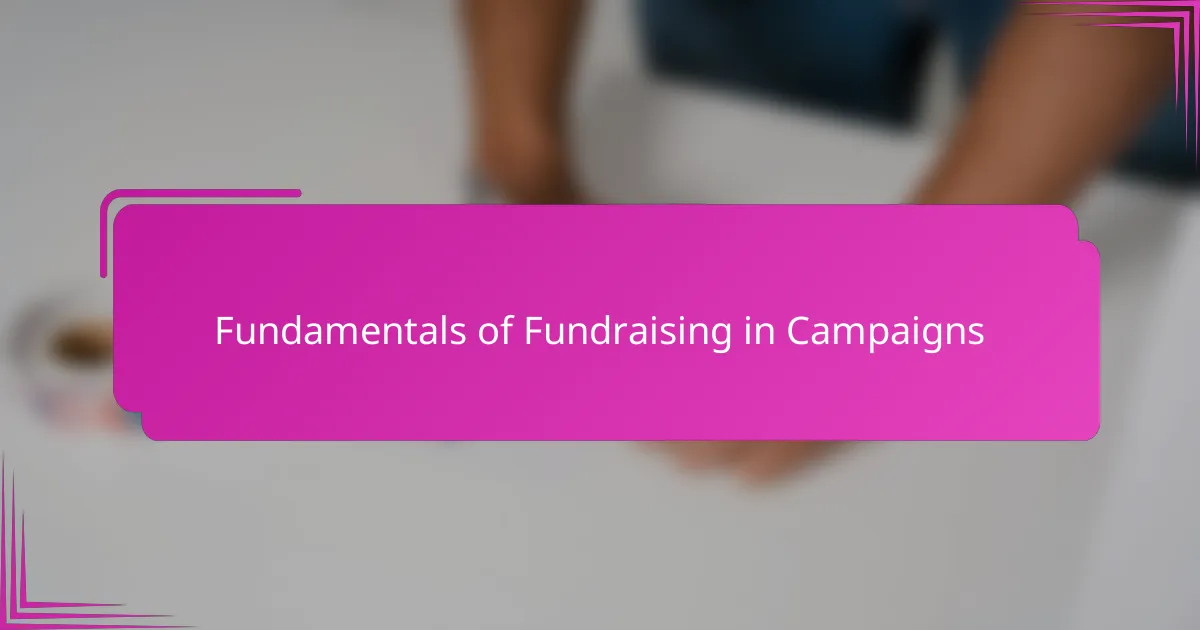
Fundamentals of Fundraising in Campaigns
When I think about fundraising in Republican campaigns, the first thing that comes to mind is the crucial role of building trust. Donors want to believe in the candidate and the message behind the campaign. Without establishing that connection early, even the best strategies can fall flat.
I’ve seen firsthand how clarity and consistency in communication make a huge difference. When the campaign’s goals are transparent and the fundraising asks are straightforward, supporters feel more empowered to contribute. Isn’t that what fundraising boils down to—making people feel like they’re part of a bigger cause?
Another key element is knowing your audience deeply. Tailoring your outreach to resonate with specific Republican voter bases not only increases donations but also builds lasting relationships. In my experience, campaigns that ignore this end up chasing funds without real engagement, which feels like missed potential.
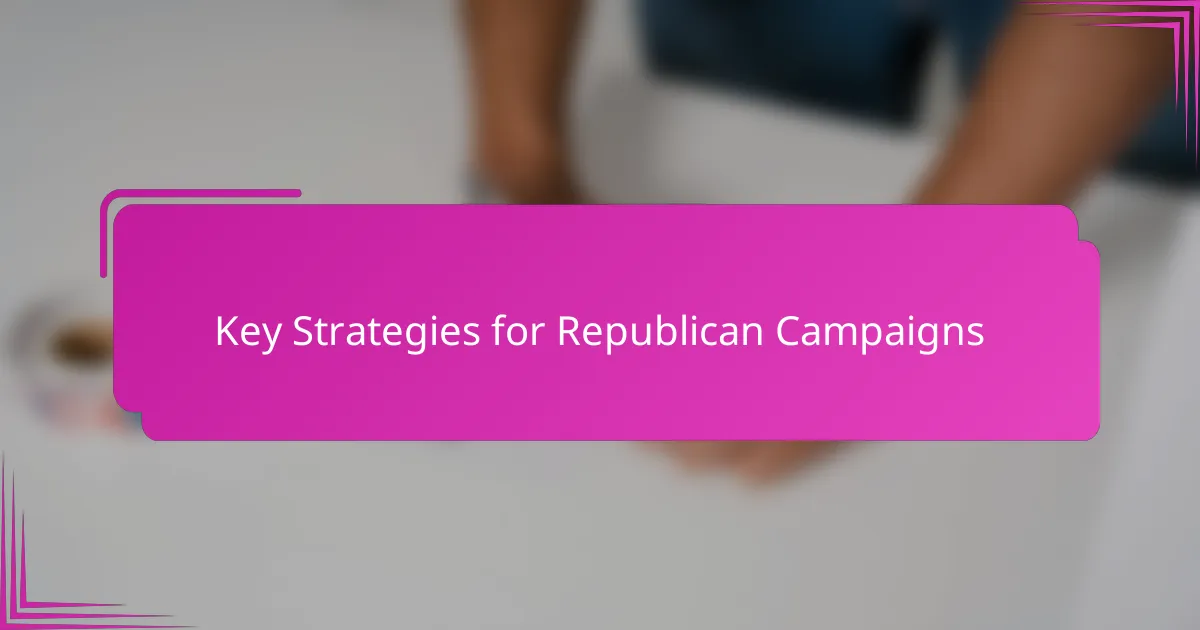
Key Strategies for Republican Campaigns
When I reflect on key strategies for Republican campaigns, targeting core voter demographics stands out. In my experience, focusing fundraising efforts on suburbs, rural areas, and specific age groups brings remarkable results. Have you ever noticed how campaigns that align messages to these groups tend to see a stronger donation response?
Building a grassroots network is another strategy that resonates deeply with me. Encouraging small-dollar donations through local events creates momentum that no big check alone can match. I remember one campaign where door-to-door conversations translated into a surge of contributions, proving that personal connection can’t be replaced by email blasts.
Digital outreach has transformed fundraising, but it’s the blend of traditional and modern tactics that usually wins. Utilizing social media ads combined with phone calls from trusted volunteers creates a multi-layered approach campaigns can’t afford to ignore. Isn’t it fascinating how combining old-school values with new technology can energize a campaign’s financial backbone?
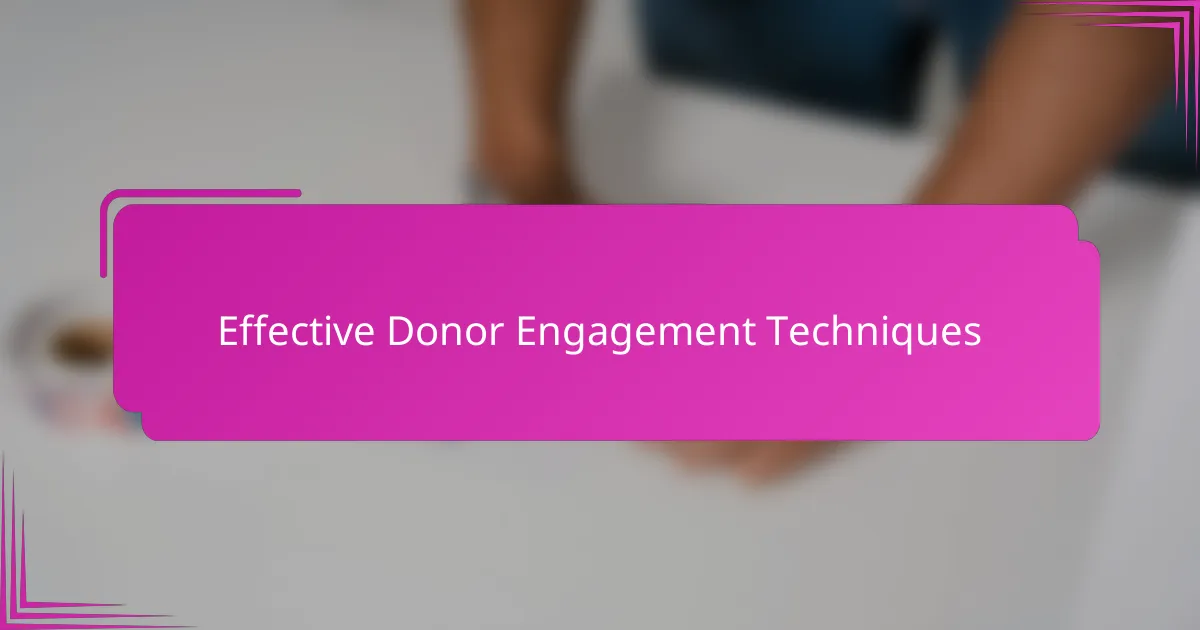
Effective Donor Engagement Techniques
Engaging donors effectively often comes down to making each supporter feel genuinely valued. I’ve noticed that personalized thank-you messages—ones that go beyond generic emails—build a stronger emotional bond. Have you ever received a note that made you feel seen and appreciated? That personal touch can turn a one-time donor into a lifelong advocate.
Another technique that’s worked well for me involves creating exclusive opportunities for donors to connect directly with the candidate. Whether it’s a small gathering or a virtual town hall, these moments give donors a sense of insider access and investment. I recall a campaign where a simple Q&A session sparked enthusiasm and doubled donations overnight.
Consistency is just as important as personalization. Regular updates that show tangible progress not only keep donors informed but also reinforce their sense of impact. When supporters see exactly how their contributions are making a difference, their commitment deepens—and so does their willingness to give again. Isn’t that the ultimate goal of donor engagement?
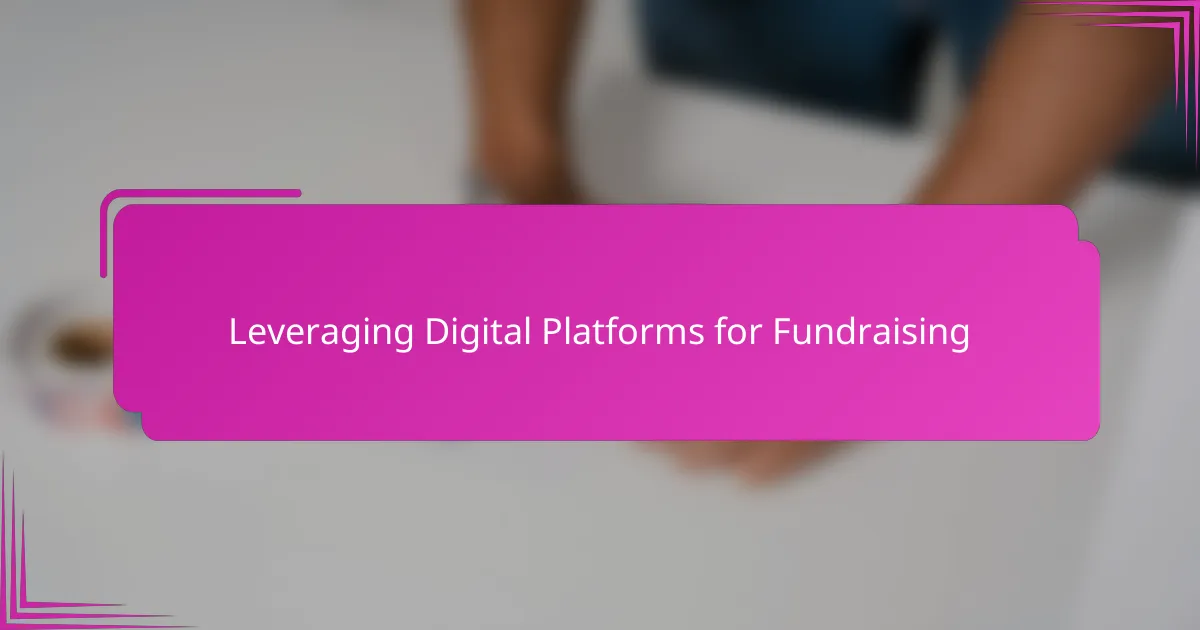
Leveraging Digital Platforms for Fundraising
Digital platforms have completely changed the game for fundraising in Republican campaigns. I remember working on one campaign that used targeted Facebook ads paired with email appeals—it was amazing how quickly small donations started flooding in. Have you ever thought about how precise data from these platforms helps tailor messages that truly resonate with supporters?
What excites me most about digital fundraising is the immediacy it offers. A well-timed social media post or an urgent email during a key moment can spark a donation frenzy you just can’t replicate with traditional methods. I’ve seen campaigns raise substantial funds overnight simply by tapping into this sense of urgency on platforms where people spend their time daily.
But it’s not just about blasting messages; it’s about creating a genuine online community. When campaigns engage authentically—responding to comments, sharing behind-the-scenes content, or hosting live streams—I’ve noticed donors feel more connected and motivated to give repeatedly. Isn’t that sense of belonging exactly what converts casual supporters into dedicated advocates?
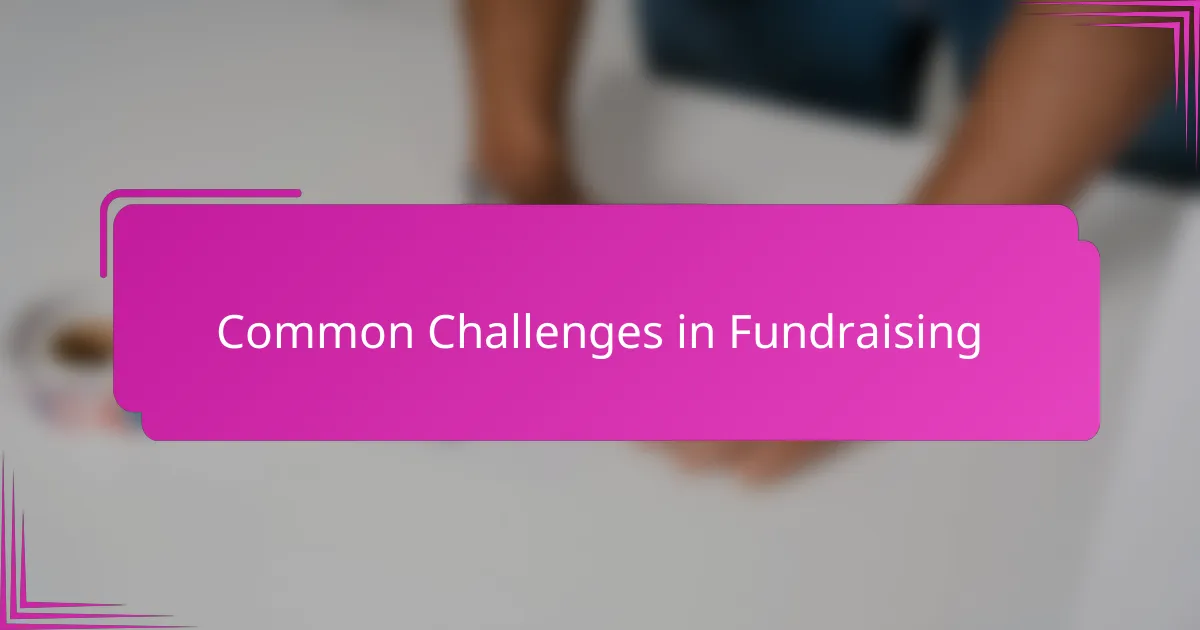
Common Challenges in Fundraising
One common challenge I’ve noticed in fundraising is donor fatigue. When supporters get bombarded with constant asks and updates, they can start to tune out, no matter how compelling the cause. Have you ever felt overwhelmed by too many emails or calls? It reminded me of a campaign where dialing back the frequency actually revived interest and brought in fresh donations.
Another hurdle is breaking through the noise in a saturated political environment. Republican campaigns often compete not just with each other, but with countless causes vying for attention and dollars. I’ve learned that standing out requires creativity and authenticity, but it’s easier said than done. How do you make your message memorable when everyone is shouting?
Finally, there’s the issue of limited resources—time, staff, and money—to execute comprehensive fundraising strategies. I’ve seen smaller campaigns struggle to balance outreach efforts while managing day-to-day operations. It can feel like juggling too many balls at once, risking burnout or missed opportunities. Have you ever wondered how some campaigns pull it off without a large team behind them? It’s a constant challenge that calls for smart prioritization and tough decisions.

Measuring Fundraising Success
Measuring fundraising success goes beyond just looking at the total dollar amount raised. From my perspective, it’s also about assessing donor retention and growth over time. Have you ever noticed how some campaigns rake in big sums initially but struggle to keep supporters engaged for the long haul? That tells me there’s more work to do in building lasting relationships.
I’ve found it invaluable to track metrics like average donation size and the number of new versus repeat donors. These numbers offer real insight into how well the campaign is connecting with its base. For instance, one campaign I was involved in saw a steady rise in small contributions, signaling a broadening grassroots network rather than just relying on a few large checks.
Finally, timing plays a crucial role in measuring success. Hitting fundraising targets ahead of key milestones can energize the entire campaign and create momentum. When a campaign surpasses expectations early on, it often signals that the messaging and outreach strategies are resonating. Doesn’t that early boost feel like an encouraging vote of confidence?
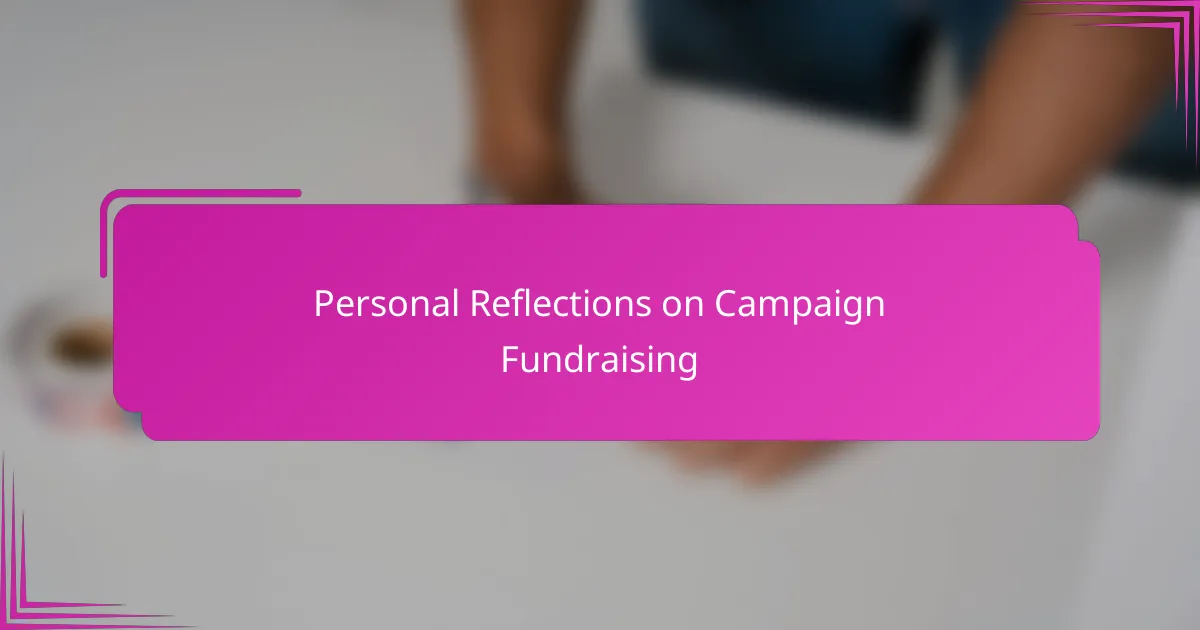
Personal Reflections on Campaign Fundraising
Fundraising in campaigns always feels like walking a tightrope to me—balancing urgency with respect for supporters’ time. I remember feeling that tension sharply during a mid-campaign push when every ask risked donor fatigue. Have you ever wondered how to keep people motivated without overwhelming them? Finding that rhythm, in my experience, is key to sustaining momentum.
There’s also something deeply rewarding about seeing the personal side of fundraising. When a supporter shares why they gave, it reminds me that our efforts aren’t just about numbers but about real people with genuine hopes. Those moments have reinforced for me why transparency and authenticity aren’t just buzzwords—they’re the heart of effective fundraising.
At times, fundraising can feel like a puzzle with shifting pieces, where no single strategy holds all the answers. I’ve learned to embrace flexibility—testing new approaches while holding onto core values to stay grounded. Doesn’t that challenge keep the work both exciting and meaningful? For me, that adaptability is what keeps a campaign alive and connected to its supporters.